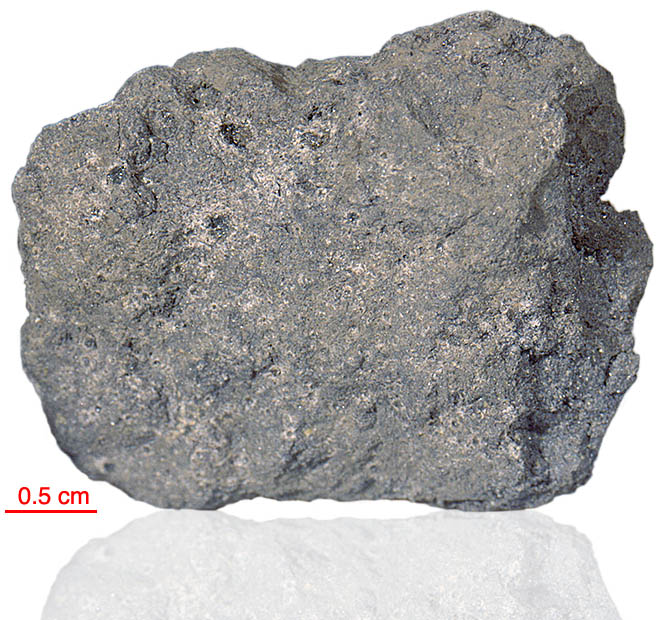
Fact sheet
76537 is a fine-grained variolitic basalt with olivine phenocrysts (rotation 1) and long needles of ilmenite that was collected as part of a rake sample. Brown pyroxene is intergrown with plagioclase in radial clusters. Pyroxene crystals often have trains of opaque inclusions along their length (rotation 2).
The sample weighed 26.5 grams before analysis and has not been dated.
Further details of this and other Apollo samples are here: http://curator.jsc.nasa.gov/lunar/
Apollo 17, the final manned landing mission, had two objectives: to obtain samples of ancient rocks from the lunar highlands and to look for evidence of younger volcanic activity on the valley floor.
This small Collection contains material deriving from both periods, including igneous rocks around 4.3 billion years old from the lunar highlands as well as younger volcanic samples dating from about 3.6 billion years ago.
Apollo 17 was launched on 7 December 1972.






